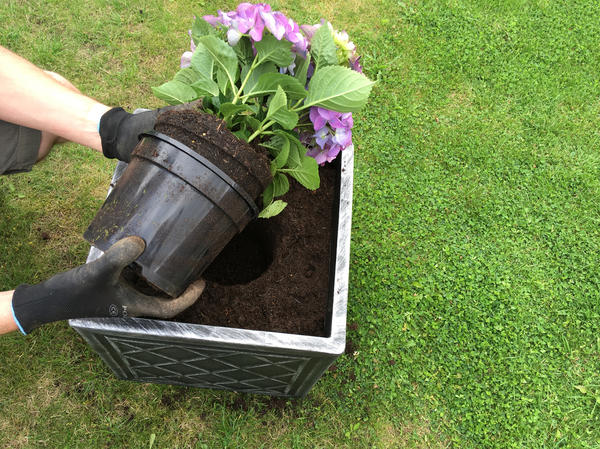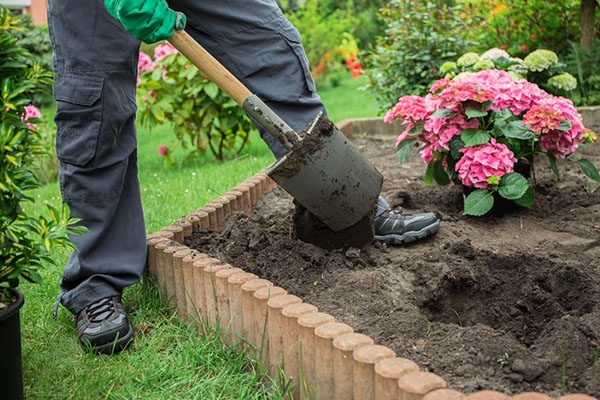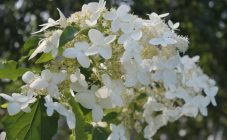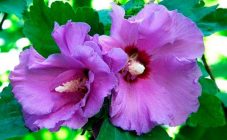Content:
One of the beautiful flowers that adorn the garden is the hydrangea. But, despite the simple care, some gardeners are wondering why the panicle hydrangea does not bloom.
To help hydrangeas bloom and prolong flowering, you need to find out what is the reason for the lack of flowering.
Agrotechnical conditions for the growth of hydrangea
Panicle hydrangea is a shrub, up to 3 meters high, with upright spreading branches. Small flowers are collected in large pyramidal inflorescences, 20-30 cm long. Abundant flowering from June to October (depending on the variety). The color of the inflorescences varies from white to pink, lilac, blue. Some varieties can change the color of the inflorescences with changing weather conditions.
The main conditions for the successful development, growth and flowering of a plant are:
- Planting quality material, selected taking into account climatic conditions, frost resistance, drought resistance,
- Choosing a landing site,
- Compliance with the recommended timing, scheme, as well as the introduction of organic fertilizers during planting,
- Correct timely watering,
- Appropriate fertilization,
- Shelter in the winter.
It is possible to make a large-leaved variety of panicle hydrangea bloom or accelerate the growth only if the recommendations for planting and competent high-quality care are followed.
The reasons for the lack of flowering
This type of hydrangea sharply reacts to insufficient (improper) care, which is noticeable when the foliage grows excessively in the plant, the flower becomes much smaller in size, while it becomes more rare, not so lush, and the color of the inflorescences is faded.
The main reasons for the lack of flowers in paniculate hydrangea are as follows.
Improper watering
For successful growth and flowering, the plant needs regular watering. In hot weather, water should be watered 2 times a week, in dry, cool weather - once a week.
Watering is carried out with clean, settled water under the root, at least 10 liters of water for each hydrangea bush.
Fertilization
If fertilizers of unsuitable compositions are not applied on time, the plant experiences severe stress, which negatively affects the external state of the hydrangea. It is necessary to apply fertilizing, according to the schedule recommended by experienced gardeners:
- During planting, in early spring and before flowering, mineral (containing phosphorus, potassium, magnesium, zinc) and nitrogen-containing fertilizers are applied weekly under the root. You can mulch the root zone with organic fertilizers (household plant waste, cut grass, sunflower seed, etc.).
- In the summer period (during budding or the beginning of flowering), potassium-phosphorus fertilizers are applied once every 7-10 days, the application of nitrogen fertilizers is stopped.
- In the autumn (after the end of flowering), phosphorus fertilizers are applied to strengthen and better winter hardiness of the buds. You can add rotted cow dung.
Hydrangea will grow, blossom and decorate with its color only on fertile, loose, well-moistened and fertilized soil. If the acidity of the soil is insufficient, you can add a little wood ash to the soil (experienced gardeners advise the ashes of the vine, fruit trees: cherries, peaches, apple trees).
Wrong landing site
Planting paniculate hydrangea in a shaded place or under the scorching rays of the sun in a draft is fraught with dropping leaves, lack of flowers, or flowering with very small rare inflorescences.
The best place to plant hydrangeas is in partial shade or with diffused sunlight, protected from drafts, strong gusts of wind, with fertile soil and sufficient water supply. Planting in a lowland with constant stagnation of water contributes to decay of the root system, its underdevelopment, lack of growth and flowering.
The panicle hydrangea planted in the shade of fruit trees will not bloom, even if you increase watering and feeding.
Incorrect autumn pruning
With improper pruning during the formation of the crown, the shrub stops blooming. Correct pruning consists of shortening weak and thin shoots. Only dry branches and shoots growing inside the crown and thickening the bush can be completely cut off.
It is strictly forbidden to cut off the upper shoots, on which buds are formed in autumn, because from these buds in the spring buds will awaken, which will open into a luxurious flower.
Insufficient shelter in winter
Despite the fact that panicle hydrangea is the most frost-resistant variety, when growing this species in the northern regions of Russia, it is necessary to shelter shoots in the winter.
Shelter is carried out after autumn pruning with the onset of cold weather, when all the inflorescences have already faded. The hydrangea flowering bush is tilted to the ground, covered with agrofibre (lutrasil) and covered with peat or earth. You can use fallen dry leaves, spruce needles.
Bending the branches of an adult shrub (over 5 years old) to the ground should be extremely careful so as not to break them.
The shelter should be removed in the spring, when the threat of frost has completely passed. You should not cut off dry, at first glance, branches, since with sufficient watering, buds can wake up on them, which will eventually turn into a luxurious flower.
Adaptation after landing
After planting a hydrangea bush, it is important to pay due attention to the development of the plant. In the first time after planting, it is often necessary to water only the planted bush in order to speed up the process of rooting and development. Also make fertilizing and growth stimulants. The first time after planting, the leaf may become more faded, lighter. But as the hydrangea grows rooted, the leaf will become brighter and stronger.
You should also refrain from buying and planting hydrangeas grown in greenhouse conditions. Since in this case drip irrigation was carried out, a large amount of fertilizers and growth stimulants were applied to the soil, which will negatively affect flowering in the years following planting.
Poor root development
Hydrangea blooms in the second year after planting, when its root system is sufficiently formed. Young bushes overfed with fertilizers, weak underdeveloped roots - the reason for the lack of flowering.
If you do not make the above mistakes, this will help the plant to overwinter and delight its owner with a lush color.
Lack of flowering for several years is another of the problems that beginner gardeners face. The main reasons for this problem are the abnormal development (underdevelopment) of the root system, over-feeding, excessive watering, and severe freezing of the shoots.
Reasons for late flowering
If the panicle hydrangea began to bloom late, then the reasons may be:
- ¾ Planting the plant in an unsuitable poor soil with high acidity, heavy, loamy, sandy.
- ¾ Lack of nutrients. The lack of fertilizing and fertilization is manifested in the form of late flowering of the bush, regardless of the variety and early maturity.
- ¾ Excess moisture.
- ¾ Damage by fungal infections (powdery mildew, late blight),
- ¾ Damage by pests: weevils, aphids, spider mites.
At home, you can make the hydrangea bloom earlier in the following ways:
- ü Decrease the amount of watering, and then sharply increase. Such changes will provoke an artificial flowering onset.
- ü Make light pruning of the youngest shoots to speed up the growing season and make the hydrangea bloom earlier.
- ü Thoroughly loosen the soil, mulch it with organic matter, feed it with curdled milk (stir 3 liters of fresh curdled milk in 10 liters of water and water the roots abundantly).
To avoid frequent questions when panicle hydrangea does not bloom (blooms late) what to do, it is important to strictly observe agrotechnological measures that contribute to the rapid development of the root system, timely and abundant flowering.
Variety selection
When choosing a type of panicle hydrangea for planting, it is important to pay special attention to the variety, the plant's compliance with the climatic zone, planting and care requirements.
A variety bred for cultivation in the southern regions of Russia, when planted in the northern regions, will either bloom late or not bloom at all.
Proper and proper care helps to grow a healthy plant, and the accelerated growth of the root system promotes abundant and lush flowering, regardless of hydrangea variety and color.















